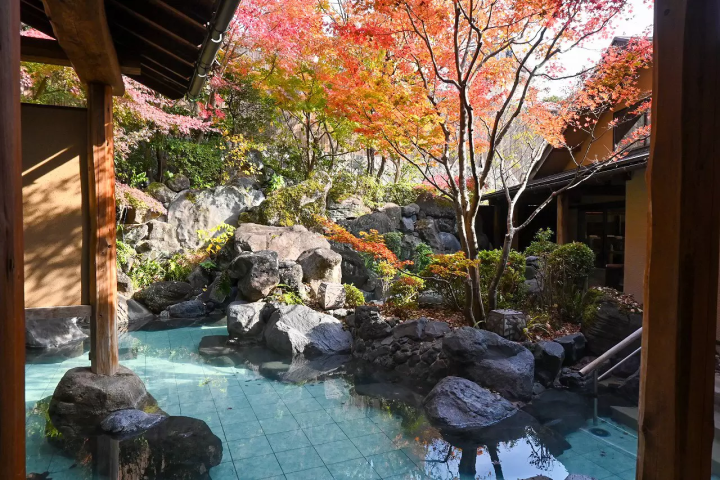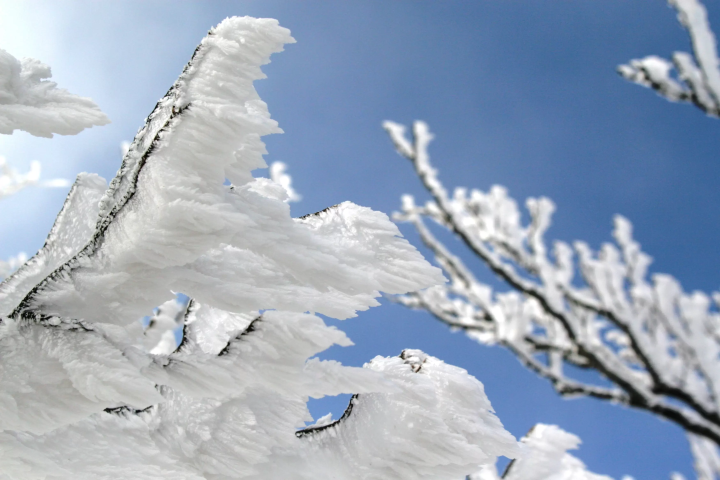Volcanic Eruptions

To minimize potential damages from volcanic eruptions, the Japan Meteorological Agency closely monitors the activities of 111 active volcanoes throughout Japan and provides real-time volcanic alerts on the monitoring.
1. Description
Japan lies on the Pacific Ring of Fire, a region known for active volcanic activities. The Japanese archipelago is home to dozens of active volcanoes, with the most famous being Mt. Fuji. 21 of the active volcanoes are within the Greater Tokyo area alone. Many of the active volcanoes could produce volcanic eruption. Volcanic eruption is the spewing of volcanic ash into the air and flowing of extremely hot volcanic lava into the area surrounding the volcano.
Lava can destroy entire communities lying next to erupted volcanoes and bring the local transport system to a halt as people are evacuated from the general area. Volcanic ash can reduce visibility in a wider area and cause respiratory sickness. Please avoid areas affected by volcanic eruptions, as there is the potential for serious health damage. Checking locally available hazard maps for locations of active volcanoes and their current potential for eruptions is recommended when going to the vicinities of active volcanoes.
Negative Impacts of Volcanic Eruptions
The negative impacts of volcanic eruptions to humans can come in several different ways. One comes from cinders, or objects spewed into the air during eruptions. They can disseminate several kilometers from the source of the eruption, and fatally injure people as well as damage cars, houses, and roads. Hide behind big sturdy rocks or buildings to avoid being hit by cinders.
A pyroclastic flow is a stream of rocks, superheated steam, and volcanic ash that flow down the volcano after an eruption. It can reach speeds up to several hundred kilometers per hour and temperatures of several hundred degrees. It is impossible to flee from the path of a pyroclastic flow once it occurs. It is an extremely fearsome phenomenon that can flood, burn, and destroy a wide area regardless of changes in topography. When a pyroclastic flow occurs, you should run away from riverbeds and other routes taken by the flow.
Eruptions also release volcanic gas into the air. Colorless volcanic gas, can be difficult to detect as a source of danger. However extreme caution is necessary as it can be potentially toxic and cause damage to your respiratory systems. The worst case scenario is permanent health damage and even death.
2. Warnings and Advisory Information
To minimize potential damages from volcanic eruptions, the Japan Meteorological Agency closely monitors the activities of 111 active volcanoes throughout Japan and provides real-time volcanic alerts on the monitoring.
Standardized volcanic alert in Japan follows a five-level scale, with 1 being the lowest and 5 the most urgent (please see table below). As active volcanic activities are observed, the alerts will be issued on TV and over the Internet. It is advised that travelers take the actions corresponding to the warnings in order to avoid dangers from lapses in personal decision-making.
Volcanic Warning System (for volcanoes where volcanic alert levels are applied)
Emergency Warning(Target area Residential areas and non-residential areas nearer the crater,Levels5,Keyword Evacuate)
Expected volcanic activity:Eruption or imminent eruption that may cause serious damage in residential areas and non-residential areas nearer the crater.
Action to be taken by residents:Evacuate from the danger zone. (Target areas and evacuation measures are determined in line with current volcanic activity.)
Emergency Warning(Target area Residential areas and non-residential areas nearer the crater,Levels4,Keyword Prepare to evacuate)
Expected volcanic activity:Possibility or increasing possibility of eruption that may cause serious damage in residential areas and non-residential areas nearer the crater.
Action to be taken by residents:Prepare to evacuate from alert areas. Have disabled people evacuate. (Target areas and evacuation measures are determined in line with current volcanic activity.)
Warning(Target area Non-residential areas near the crater,Levels3,Keyword Do not approach the volcano)
Expected volcanic activity:Eruption or possibility of eruption that may severely affect places near residential areas (possible threat to life in such areas).
Action to be taken by residents:Stand by and pay attention to changes in volcanic activity. Have disabled people prepare to evacuate in line with current volcanic activity.
Warning(Target area Around the crater,Levels2,Keyword Do not approach the crater)
Expected volcanic activity:Eruption or possibility of eruption that may affect areas near the crater (possible threat to life in such areas).
Action to be taken by residents:No actin required.
Forecast(Target area Inside the crater,Levels1,Keyword Potential for increased activity)
Expected volcanic activity:Calm: Possibility of volcanic ash emissions or other related phenomena in the crater (possible threat to life in the crater).
Action to be taken by residents:No actin required.
Source: Volcanic Warning System (for volcanoes where volcanic alert levels are applied), the homepage of the Japan Meteorological Agency
http://www.data.jma.go.jp/svd/vois/data/tokyo/STOCK/kaisetsu/English/level.html
“The Features of Volcanic Disasters,” e-College (Fire and Disaster Management Agency of the Ministry of Internal Affairs and Communications)
http://open.fdma.go.jp/e-college/study00/kiso/saigai_chishiki/kazan/03/index.html
Source: Fire and Disaster Management Agency of the Ministry of Internal Affairs and Communications
This is the official account of MATCHA's editorial department. Our articles feature useful travel information for visitors to Japan, from how-to guides to recommended places to visit.




































![[Latest] Complete Guide to atmos Exclusive Sneakers and Special Edition Models | Apparel and Upcoming Releases](https://resources.matcha-jp.com/resize/720x2000/2025/12/12-252706.webp)